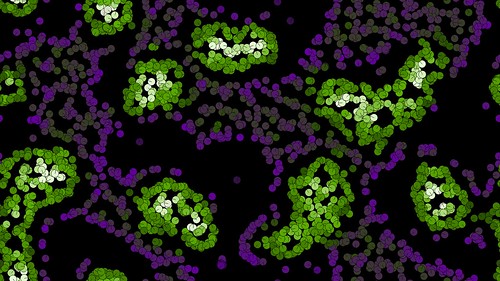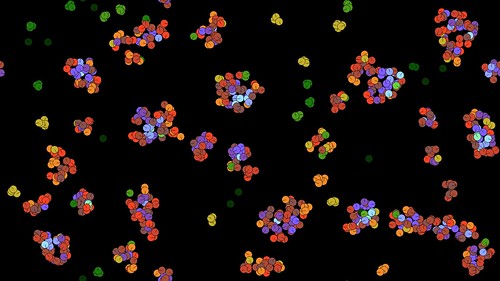A while back I was playing with Particle Life simulations. At that time, another video I came across was the following
Click here to read the paper “How a life-like system emerges from a simple particle motion law” that describes how it works in great detail.
For a simpler overview I recommend this page by Brian H that includes snippets of the source code that helped me get my version working.
My even (hopefully) simpler explanation is as follows;
1. Fill the simulation space with a bunch of particles.
2. Particles have settings for radius, alpha, beta and velocity.
– radius is how far around itself each particle can sense the other particles.
– alpha is the fixed rotation amount. Each particle turns by this amount each step of the simulation.
– beta is the proportional rotation. This is the amount the particle turns depending on its neighbor particles.
– velocity is how far the particles move forward each step.
3. Each particle maintains a heading which is the direction it is facing.
4. Each of the particles move by the following steps
– Count how many neighbor particles are within the radius
– Work out how many of them are to the left and right of the particle
– Turn towards the left or right with the larger count
– Move forward
That’s all there is. From those relatively local and simple steps you can get some nice cell like and amoeba like structures emerging.
More sample images in this gallery.
The following movie shows some example results created with the latest version of Visions of Chaos.
Here is another sample movie. This time using 2D metaballs so individual particles in close proximity to other particles merge into blobs.
Jason.



